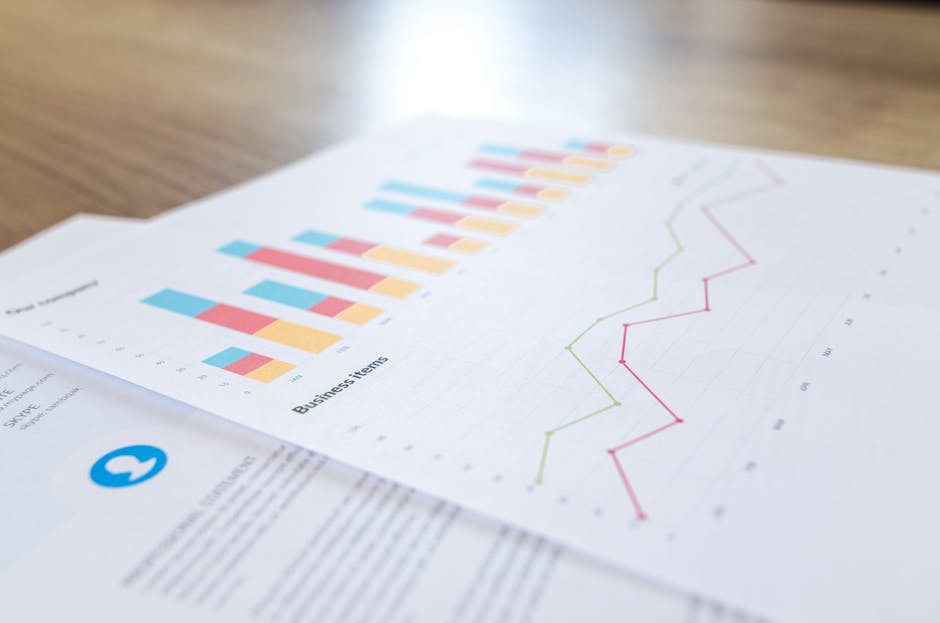Mastering Website Design SEO
Table of Content.
- What is Website Design SEO?
- Key Elements of SEO-Friendly Design
- The Role of User Experience in SEO
- Incorporating Keywords in Design
- Optimizing Images for SEO
- Measuring SEO Success in Design
- Best Practices for Website Design SEO
What is Website Design SEO?
Website Design SEO is the art of creating a website that not only looks good but also ranks well on search engines. It's like building a beautiful house that everyone can find on the map. This involves using the right keywords, such as "website design seo," in strategic places like headings and content.
Think about the speed of your site. A slow website can frustrate visitors and push them away. Fast-loading pages keep users happy and improve your SEO ranking. Another key part is mobile-friendliness. Many people browse on phones, so make sure your site looks great on smaller screens.
Good navigation is also part of Website Design SEO. If users can easily find what they're looking for, they'll stay longer, reducing the bounce rate. This tells search engines that your site is valuable. Images should be optimized too. Large files can slow down your site, so use compressed images without losing quality.
Finally, consider the structure of your URLs. Clear and descriptive URLs help visitors know what to expect on a page and make it easier for search engines to understand your content.
Key Elements of SEO-Friendly Design
Creating an SEO-friendly website design is like crafting a ship that's not only sleek but also navigates the online seas with ease. Start with making your site mobile-responsive. With more folks browsing on their phones, a site that adjusts to any screen size is a must. Imagine trying to read a tiny menu at a restaurant; that's what it's like for users on a non-responsive site.
Next, focus on site speed. A slow website is like waiting for a snail to cross the road. People get impatient and leave. Use tools to compress images and optimize the code. Faster sites rank better in search engines and keep visitors happy.
Your site structure also plays a big role. Think of it as a well-organized library. Use clear headings and subheadings, making it easy for users and search engines to understand your content. Good navigation is key. Visitors should find what they need quickly, without feeling lost.
Don't forget about clean URLs. Short and descriptive web addresses are like clear signposts. They tell users and search engines what to expect. Avoid long, confusing strings of numbers and symbols. Use keywords wisely, but don’t stuff them in.
Lastly, consider accessibility. A site that everyone can use, including those with disabilities, isn't just inclusive; it often ranks better too. Use alt text for images, so search engines and visually impaired users know what each image is about.
The Role of User Experience in SEO
User experience, or UX, plays a crucial role in website design SEO. When visitors find your site easy to use, they're likely to stay longer and explore more pages. This increases the chances of conversions and lowers bounce rates. A site with a high bounce rate can signal to search engines that users aren't finding what they're looking for, negatively affecting your ranking.
Clear navigation is essential. If users can't find what they need quickly, they'll leave. Fast loading times are another critical factor. Nobody likes waiting for a slow site. Use high-quality images but keep file sizes small to maintain speed.
Mobile-friendliness is no longer optional. With many people browsing on phones, your site should look good and function well on smaller screens. A mobile-friendly design can boost your ranking in search results.
Consider accessibility too. Ensure everyone, including those with disabilities, can use your site. Use alt text for images, and make sure text is easy to read. This not only helps users but also improves your SEO. A well-designed site, focusing on user experience, can improve visibility and attract more visitors.
Incorporating Keywords in Design
When we talk about website design SEO, keywords are like the backbone. They help search engines understand what your site is all about. So, how do we weave these magic words into our design? Start by thinking about the main pages of your site. Each should focus on a primary keyword, like "website design SEO," to tell search engines what to expect.
For instance, if you have a page dedicated to web development services, the content should naturally include terms like "SEO web development." This helps search engines know that the page is relevant to people searching for those services.
Now, don't forget about headings. Using keywords in headings not only guides visitors but also improves SEO. Headings should be clear and contain variations of your main keywords. For example, "Affordable SEO Web Development Services" could be a heading that tells users and search engines what the page delivers.
Images play a role too. Use descriptive file names and alt texts that include keywords. An image showing web design work could have a file name like "seo-web-development.jpg" and an alt text like "SEO web development project." This way, search engines can read and rank your images.
Finally, ensure your design supports easy navigation. A well-structured site helps search engines crawl and index your pages. Use internal links with anchor texts that include keywords. This not only boosts SEO but also enhances user experience by guiding visitors to relevant pages.
Optimizing Images for SEO
When it comes to website design SEO, optimizing images is a crucial step. Images can greatly enhance a user's experience, but they can also slow down a website if not handled correctly. Let's look at how you can make your images work better for your site.
First, consider the size of your images. Large images can take longer to load, which may frustrate visitors. To avoid this, resize your images before uploading them to your site. Tools like Photoshop or online services such as TinyPNG can help reduce file sizes without losing quality.
Next, choose the right format for your images. The most common formats are JPEG, PNG, and GIF. JPEGs are best for photographs because they balance quality and file size. PNGs are suitable for images that need transparency or have text. GIFs work well for simple animations. Picking the right format helps maintain quality while keeping file sizes manageable.
Don't forget to use descriptive filenames. Instead of uploading a file called "IMG1234.jpg," rename it to something meaningful like "blue-sky-landscape.jpg." This helps search engines understand the content of your images, which can improve your SEO.
Adding alt text to your images is another important step. Alt text is a short description of an image that helps search engines and visually impaired users understand what the image shows. For example, if you have an image of a dog playing in a park, your alt text might be "dog playing in a park." This not only improves accessibility but also provides context to search engines, boosting your site’s SEO.
Consider lazy loading for your images. Lazy loading means images only load when they are visible to the user. This can speed up your site, especially if you have many images on a single page. Many web development frameworks and plugins offer lazy loading features to make this process easier.
Finally, take advantage of image sitemaps. An image sitemap is a file that provides information about the images on your site, helping search engines discover them more effectively. Including an image sitemap can improve the chances of your images appearing in search engine results.
By optimizing images for SEO, you not only enhance user experience but also improve your website's performance in search results.
Measuring SEO Success in Design
Tracking how well your website design seo is doing can seem tricky at first. But let's break it down step by step. First off, you'll need some tools. Google Analytics is a great start. It shows you how many visitors your site gets and where they come from. You can see what pages they visit and how long they stay. This data helps you understand if your design is keeping people interested.
Next, pay attention to bounce rate. This is the percentage of visitors who leave your site after viewing just one page. If it's high, your design might not be engaging enough. Try changing up colors or layout to see if it makes a difference. Keep testing until you see improvement.
Look at organic traffic too. This is traffic coming from search engines like Google. A rise in organic traffic means your website design seo is working well. If it's not improving, you might need to tweak your keywords or content.
Keyword ranking is another key metric. Use tools like SEMrush or Ahrefs to track where you stand for important keywords. If you're not on the first page, try optimizing your content and design to better match what users are searching for.
Conversion rate is crucial. This tells you how many visitors are taking a desired action, like signing up for a newsletter or making a purchase. If your conversion rate is low, consider simplifying the process. Remove distractions and make sure your calls to action are clear and visible.
User feedback can be a goldmine. Ask visitors what they like or dislike about your site. Use surveys or feedback forms. This insight can help you make design changes that enhance user experience and boost seo web development.
Finally, check your site's loading speed. Slow sites can hurt your rankings and frustrate users. Use tools like PageSpeed Insights to find speed issues and get suggestions for improvement. A faster site can lead to better engagement and higher SEO rankings.
Best Practices for Website Design SEO
Let's talk about how to make your website shine with SEO-friendly design. First, think about making your website easy to use. Visitors should find what they need quickly. Use clear headings and simple navigation. This helps both users and search engines understand your site better.
Next, focus on your website's speed. A fast-loading site keeps visitors happy and improves your search engine ranking. You can compress images and use a reliable web host to speed things up.
Mobile-friendliness is another key factor. Many people use phones to browse, so your website should work well on all devices. A responsive design adjusts to different screen sizes, providing a good experience for everyone.
Content is king, but it must be relevant and engaging. Use keywords naturally in your content. Don't overstuff them, as this can hurt your SEO. Write informative articles and use images or videos to make your content more appealing.
Don't forget to optimize your URLs. Short, descriptive URLs are easier to read and remember. They also give search engines a better idea of what your page is about.
Internal linking is important too. Linking to other pages on your site helps users find more content and keeps them on your site longer. It also helps search engines crawl your site more effectively.
Finally, keep your design clean and clutter-free. A well-organized site with plenty of white space is easier on the eyes and helps users focus on your content. A clean design also signals professionalism and trustworthiness to both visitors and search engines.
FAQ
What is Website Design SEO?
Website Design SEO refers to the practice of designing and developing websites in a way that enhances their visibility and ranking on search engines. It involves optimizing various elements such as layout, navigation, and content to improve user experience and meet search engine algorithms' requirements.
What are the key elements of an SEO-friendly website design?
Key elements of an SEO-friendly design include a clean and responsive layout, intuitive navigation, fast loading times, and mobile-friendliness. These components ensure that search engines can easily crawl and index the site while providing a seamless experience to users.
How does user experience affect SEO rankings?
User experience affects SEO rankings because search engines prioritize websites that offer engaging and user-friendly experiences. Factors such as site speed, mobile responsiveness, and easy navigation contribute to lower bounce rates and higher user engagement, which can positively impact SEO rankings.
How can I effectively incorporate keywords into my website design?
To effectively incorporate keywords, integrate them naturally into your website's content, including headings, meta tags, and URLs. Ensure that keyword usage aligns with user intent and enhances readability without compromising on the quality of the content.
What techniques can optimize images for better SEO performance?
Optimize images by compressing them to reduce file size, using descriptive filenames, and adding relevant alt text. These practices improve loading speed and help search engines understand the content of the images, enhancing overall SEO performance.
What metrics should I track to measure SEO success in website design?
Track metrics such as organic traffic, bounce rate, conversion rate, page load speed, and search engine rankings. These indicators provide insights into the effectiveness of your website design SEO efforts and guide necessary adjustments for improvement.
What are the best practices for maintaining an SEO-friendly website design?
Best practices include regularly updating content, ensuring mobile compatibility, optimizing for speed, using HTTPS for security, and maintaining a clean code structure. Following these practices helps maintain an SEO-friendly site that offers a great user experience.



